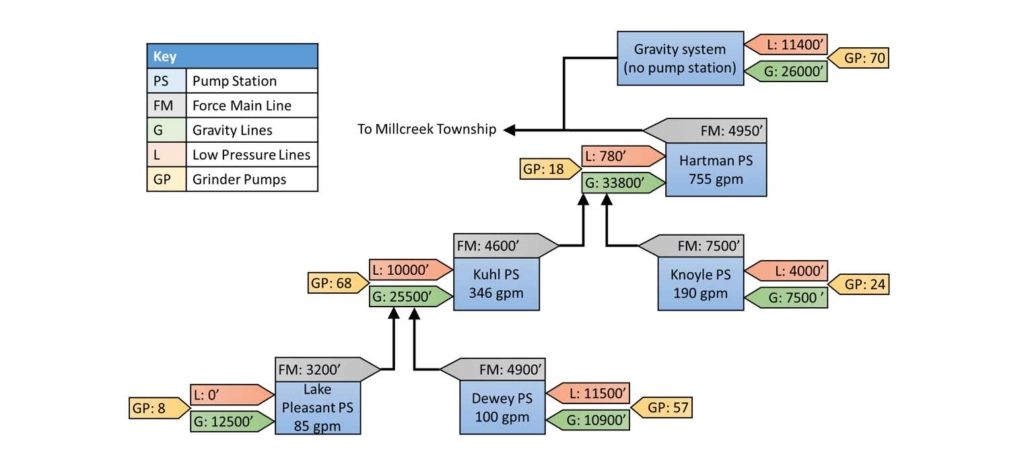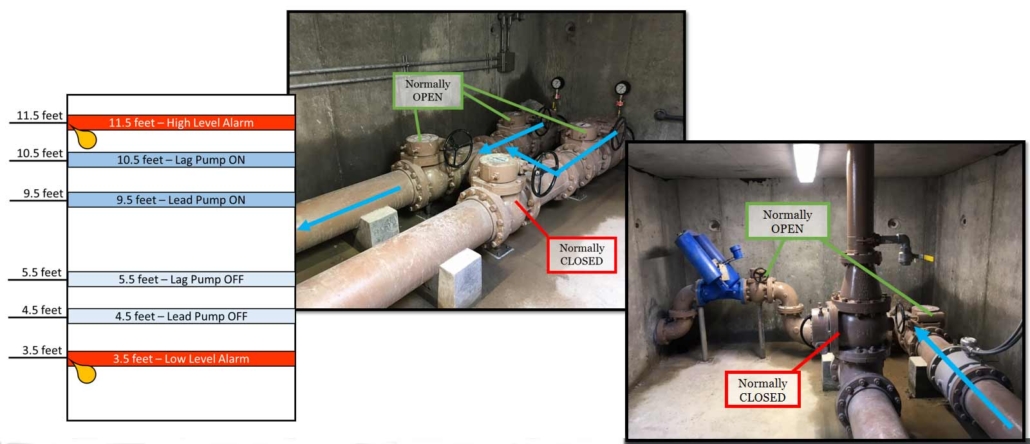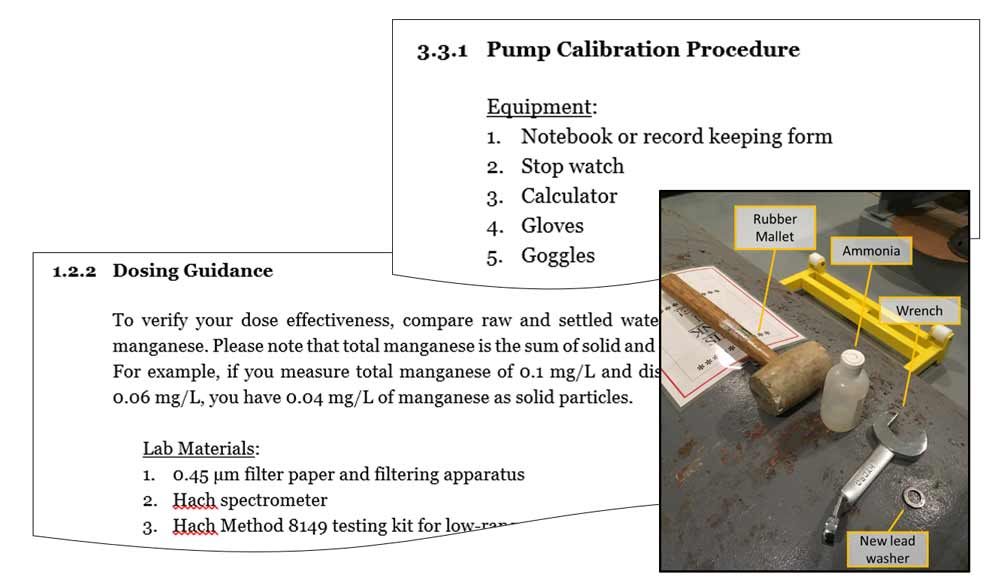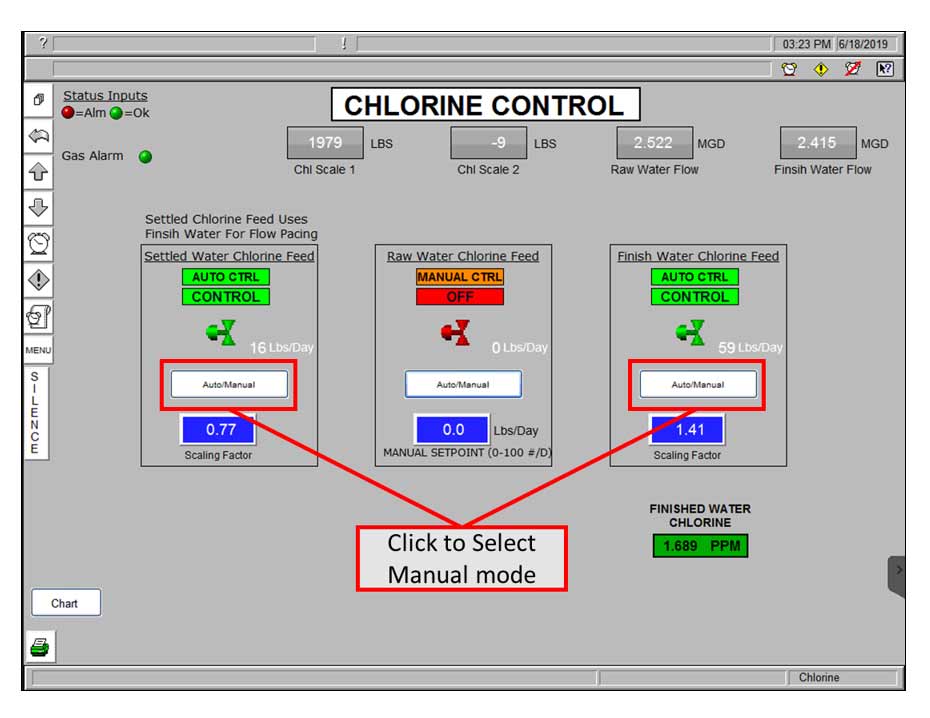Standard Operating Procedure documents can be an important tool to ensure consistency and allow flexibility (so that non-certified operators have a menu of pre-approved options for process changes when needed). They also can improve safety and serve as valuable documentation for outside inspections or audits.
Despite these benefits, many utilities still don’t have all of their procedures documented. They don’t feel they have the time or resources to dedicate to the task, nor do they have a person available to write them.
This guide is designed to change that. We’ll provide:
- simple instructions for how to prepare and manage your library of Standard Operating Procedures
- an outline of what the SOP should include.
- guidance on who’s best positioned to draft the guidelines
All of this information is designed to reduce the amount of time it takes to get Standard Operating Procedures for your utility written and approved.
What are Standard Operating Procedures?
Standard Operating Procedures (SOPs) are a set of written instructions that document a routine or procedure your utility performs on a regular basis.
For example, SOPs can be used to document procedures related to your chemical systems or pump stations. They can also be used to explain how to perform field testing or collect samples, perform modeling, or audit equipment operations.
How do Standard Operating Procedures benefit your utility?
SOPs improve consistency in plant processes between operators.
Across all shifts and all teams, SOPs guarantee everyone is following the exact same procedures (and thus getting consistent results) at all times.
They ensure quality.
Even small variations in the application of a procedure can produce different results. We see this often when a water sample is tested at multiple labs, using the same standards, yet different results are reported. Clearly defining exactly how a procedure is applied, step-by-step ensures that the results meet an organization’s quality standards every time.
They promote flexibility and continuity of operations.
They can be used for training new operators or cross-training staff to fill in where needed. This can be especially important during emergencies or staff shortages when people may have to take on revised roles. If written properly, the SOPs empower a properly certified operator from a neighboring system (or even an inadequately certified staff member) to temporarily operate your system in the primary operator is unavailable.
SOPs should be well-thought-out and responsive to the many variables that can occur. They should provide options for how to respond to complications that may arise, so that any operator (not just the operator-in-responsible-charge) can adjust the procedure – according to what’s been previously designed and approved – when needed.
They promote safety.
Well-written SOPs clearly define health and safety risks of any task, list what protective equipment is needed, and describe protocols to minimize risk. This reduces the likelihood of an accident or injury.
They provide thorough documentation for outside inspections or audits.
How do you prepare and manage your Standard Operating Procedures?
Standard Operating Procedures (SOPs) should be written by people who have knowledge and first-hand experience with the task being documented. They could be written by one person, or the task could be divided among a team of experts. This is particularly beneficial when a process involves multiple phases with a number of different staff members playing a critical role at each phase.
In our own experience, we have found it beneficial to have Level A operators write critical SOPs because they have the most expertise.
Once the initial draft has been written, it should be reviewed by the operator-in-responsible-charge. He or she will ultimately own the SOP and be responsible for making sure it is properly applied.
It’s important to have someone other than the original author review the SOP in order to be sure the instructions are clear and easily understood. If possible, it’s particularly beneficial to have someone actually test the procedures.
If your utility has a quality management plan, your quality assurance officer should review the draft SOP, as well.
Once the reviewers are satisfied, they should sign and date the SOP to indicate that it has met the review and approval standards.
SOPs are a living document. Regulations change, and situations evolve. Procedures will evolve in response, and the SOP should be updated and re-approved any time procedures are altered.
As a general rule, it’s good to review the SOPs every two years to make sure they are still accurate and complete.
Old copies should be archived in a separate place to avoid confusion but provide historical reference.
What information should Standard Operating Procedures contain?
Standard Operating Procedures (SOPs) can cover both technical and administrative procedures. They should be easy to read and provide step-by-step instructions. They should be written in the present tense as active commands, and the author should strive to cover the bases without any extraneous information. Keep it simple.
You want to include enough detail that people who are new to the job can follow along unsupervised, but not so much that you overwhelm an individual.
Many templates are available online, and they differ somewhat in format. We will provide our own recommendations here, but you can modify them to fit the needs of your organization. Once you find a format that works for your utility, make sure it is consistently applied in every Standard Operating Procedure across the organization, so people in any department know how to read and use the document efficiently. Generally, SOPs should contain:
Title Page
The title page should include:
A title that clearly identifies what activity is being documented
Names and signatures of the author and reviewers who approved the SOP
Revision Number
Revision Data
Number of pages
It might be helpful to include an identification number, as well, if your organization has a large number of SOPs. This will be an easy reference (in lieu of a longer title).
By listing the total number of pages on the first page, a user can quickly see if they have the entire document or if any pages are missing.
Table of Contents
This is optional, but is helpful for a quick reference if the SOP is long. It can also be used to mark revisions that apply to only a particular section of the SOP.
Introduction
The introduction provides the information people need to know before they dive into the actual procedures. It defines the purpose and scope of the process and describes the system to which the SOP applies.
Purpose and Scope
Well-written SOPs should briefly describe the purpose of the work, including any regulatory or internal quality standards that it addresses.
System Description
A thorough SOP ideally describes the system in 2 ways:
Written outline
Photos and illustrations with mark-up


It should also include a detailed equipment list.
Health & Safety Warnings
This section explains the health risks, list of personal protective equipment that is required, and description of protocols that minimize the risk of injury. Examples of each are shown below.
Health risks
Personal Protective Equipment
Protocols
Procedures
This is the heart of the entire document. It includes:
Summary of Method
A few sentences that give a brief overview of the entire procedure.
Definitions
Explanation of any acronyms, abbreviations, or specialized terms that will be used in describing the procedure.
Cautions
Warnings about actions that could damage equipment or degrade results.
(These warnings should be reiterated where relevant in the step-by-step instructions.)
Personnel Qualifications/Responsibilities
List the experience, training, and certifications a staff member must have to execute this procedure.
Equipment and Supplies
List the equipment a person will need to complete the required tasks. (This could include reagents and biological specimens.)
You might also include photographs of the equipment for added clarity.

Step-by-step Instruction
This includes:
Written commands:
Photos with optional mark-ups
Embedded video demonstrations (if your SOP is available in digital format on tablets or computer screens)
Screens with optional mark-ups

Troubleshooting
Tips for how to address common complications.
Data and Records Management
Identify any forms that must be used or reports that must be filed. Indicate where they should be stored. Include a copy of forms and sample reports as an attachment.
References
List any of the following that apply to this standard:
Regulations
Product Manuals
Related SOPs
Attachments
This is where you include the documents staff will use to perform the work:
Cheat sheets
Checklists
Forms
Sample reports
Reviews
Staff can use this section to sign and date the document, indicating they have read and understand it.
Revision History
It’s a good idea to track the history of this document as it changes and note where previous versions are stored in case they need to be referenced.
Once the SOP has been assembled and approved, it should be stored somewhere that is easily accessible for reference in the designated work area. This way, it is used regularly and is handy when it’s needed. Electronic SOPs can be stored on your computer network or on tablets for field personnel.
An SOP is a living document that should be regularly reviewed and updated, as processes, regulations, and equipment change. You should plan to review and re-approve the SOP every two years to make sure it stays current.





